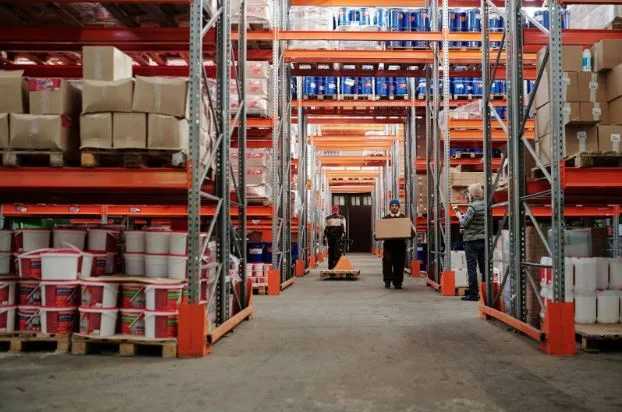Maximizing Storage Efficiency Amid Rising Inventory Demands
The warehouse always feels big when it’s empty. Wide aisles, high ceilings, space echoing back at you. But fill it with pallets, mismatched boxes, and inventory you didn’t even plan to keep that long—and suddenly it feels like you’re working inside a shoebox. You’re not alone in that.
E-commerce has been growing at double-digit rates every year, and businesses are holding 20–30% more stock than they did before the pandemic just to hedge against supply chain swings. The problem? Square footage isn’t multiplying at the same pace.
So, the big question: how do you squeeze more out of the same footprint without making your team miserable? Let’s figure it out!
The Real Cost of Messy Storage
I once stepped into a warehouse where they’d run out of shelving, so boxes were piled three deep on the floor. Need that bottom one? Hope you brought patience. Workers were frustrated, and the manager admitted their order accuracy had dropped by nearly 12% in six months. That’s not “clutter.” That’s lost money.
Industry data backs it up—inefficient layouts can cut productivity by up to 20%, according to Warehousing Education and Research Council. And wasted time isn’t just numbers on a report. It’s delayed orders, unhappy customers, and tired teams.
Why Racking Systems Work (When You Let Them)
Here’s the part a lot of people miss: floor space isn’t the limit—ceiling height is. All that empty air above your forklifts? It’s gold. The solution isn’t just “more shelves.” It’s racking systems that fit your actual inventory.
Pallet racks, for example, can be configured for heavy loads, oversized items, or whatever mix of SKUs you’re dealing with. They turn wasted vertical space into working storage, often doubling or tripling capacity. It’s not glamorous. But it’s the difference between surviving a surge and drowning in it.
Vertical vs. Horizontal: It’s About Fit, Not Fashion
Not every warehouse needs the same setup. Some spaces call for vertical storage, others for horizontal spread. Sometimes it’s a mix of both.
Here’s a quick comparison:
| Storage Type | Best Use Case | What to Watch Out For |
| Vertical (Racks, Mezzanines) | High ceilings, bulk storage, long-term | Requires lifts and safety training, higher cost upfront |
| Horizontal (Shelves, Floor Zones) | Small, fast-moving items, low-budget setups | Eats floor space fast, poor for scaling |
A small distribution center with high ceilings but limited square footage? Vertical’s your friend. A repair shop juggling thousands of tiny parts? Horizontal shelving might be less glamorous, but it’ll save your sanity.
Storage Isn’t Just “Stuffing More In”
Let’s be real: efficiency isn’t about how much you can cram in. It’s about how fast things move in and out. Workflow matters.
If your golden-zone items (waist to shoulder height) are buried, you’re trading space for slower throughput. Studies show fixing this can boost pick speed by 15–20%—and your team will thank you for saving their backs.
The Takeaway
Rising inventory isn’t slowing down, and yeah, it’s stressful. But the answer isn’t always bigger warehouses or expensive expansions. It’s using what you already have—better.
Smarter racking systems. A balance between vertical and horizontal setups. Storage that supports movement instead of blocking it. When you get those right, the warehouse feels bigger, the team feels lighter, and the numbers look better.




